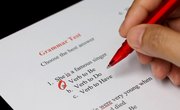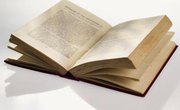Middle school English teachers are familiar with the groans that come with the instruction to “take out your grammar books.” It’s much easier to get students to free-write than it is to get them to learn the rules of grammar. However, it is a necessary part of the job. One of the first steps to good grammar is learning the parts of speech. Identifying parts of speech in sentences will help students understand the elements of syntax and become better writers.
Nouns and Verbs
When identifying the parts of speech in a sentence, it is important to find the subject and verb first. The subject is always a noun, and nouns can be identified as a person, place, thing, or idea. To identify the noun subject, ask, “Who is doing the action in the sentence?” In the sentence “Sally gently placed the cold and hungry kitten in its padded basket,” Sally placed the kitten. Therefore, Sally is the subject noun. Look for other nouns. In this sentence, we see “kitten” and “basket.” After finding the nouns, look for the verb. The verb is the action in the sentence. Students can identify the verb by asking, “What has Sally done?” In this sentence, the verb is “placed” because that's what Sally did
Modifiers
Students can identify modifiers as the words that help enhance or describe the nouns and verbs. Adjectives are one type of modifier, and they always modify nouns. Students can identify adjectives in the sentence by looking at the nouns and recognizing words that describe them. In the sentence above, we see that the kitten is “cold” and “hungry.” We also see that the basket is “padded.” Therefore, “cold,” “hungry,” and “padded” are adjectives that modify the nouns in the sentence. Adverbs act similarly, except that they modify verbs. Adverbs tell us how, when, where and why the action took place. Therefore, we can ask how Sally placed the kitten and we see that the adverb is “gently.”
Prepositions
Prepositions show the relationship between a noun and another element in the sentence. One exercise to help students identify and understand the concept of prepositions is to draw a box. Then, imagine you have some other object, such as a rock. How many relationships can the rock have to the box? For example, the rock can be in the box, on the box, under the box, or over the box. The prepositions being “in,” “on,” “under,” and over,” with the object of the preposition being “box.” Like subjects, objects of prepositions are always nouns. In our sentence about Sally and the kitten, we see that Sally is putting the kitten “in the box.” Therefore “in” is the preposition, and “box” is the object of the preposition. Students can easily memorize the prepositions so that they can quickly identify prepositional phrases in sentences.
Conjunctions
Conjunctions are words that join words, phrases, and clauses in sentences. The coordinating conjunctions are "and," "but," "or," "nor," "for" and "yet." These are easy for students to memorize and identify. In our sentence, we see the words “cold” and “hungry” joined by the coordinating conjunction “and.” Subordinating conjunctions join phrases and clauses that are subordinate to the main clause. For instance, the clause “after I return from the store” cannot stand by itself. It depends on a main clause, such as, “We will eat dinner after I return home from the store.” The subordinating conjunction “after” signals a dependent clause. To identify subordinating clauses, students can look for dependent clauses and recognize that the first word of the clause is usually a subordinating conjunction.
Practice, Practice, Practice
For students to become proficient in recognizing the parts of speech, they will need to practice identifying them regularly. There are many multi-sensory exercises that parents and teachers can apply to lessons, which will enhance their students' learning experiences. Apply a specific color to each part of speech and use highlighters to identify them in the sentence. Make word flashcards on colored cards, making sure to have plenty representing each part of speech. Have students put them together to make sentences. Have students pick out reading material that is of special interest to them and have them identify specific parts of speech in them.
Related Articles
References
Writer Bio
Debbie McCarson is a former English teacher and school business administrator. Her articles have appeared in "School Librarians’ Journal" and "The Encyclopedia of New Jersey." A South Jersey native, she is a regular contributor to "South Jersey MOM" magazine.










